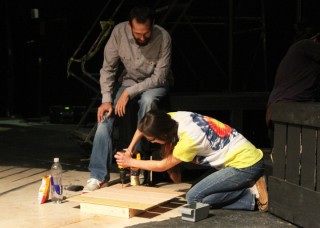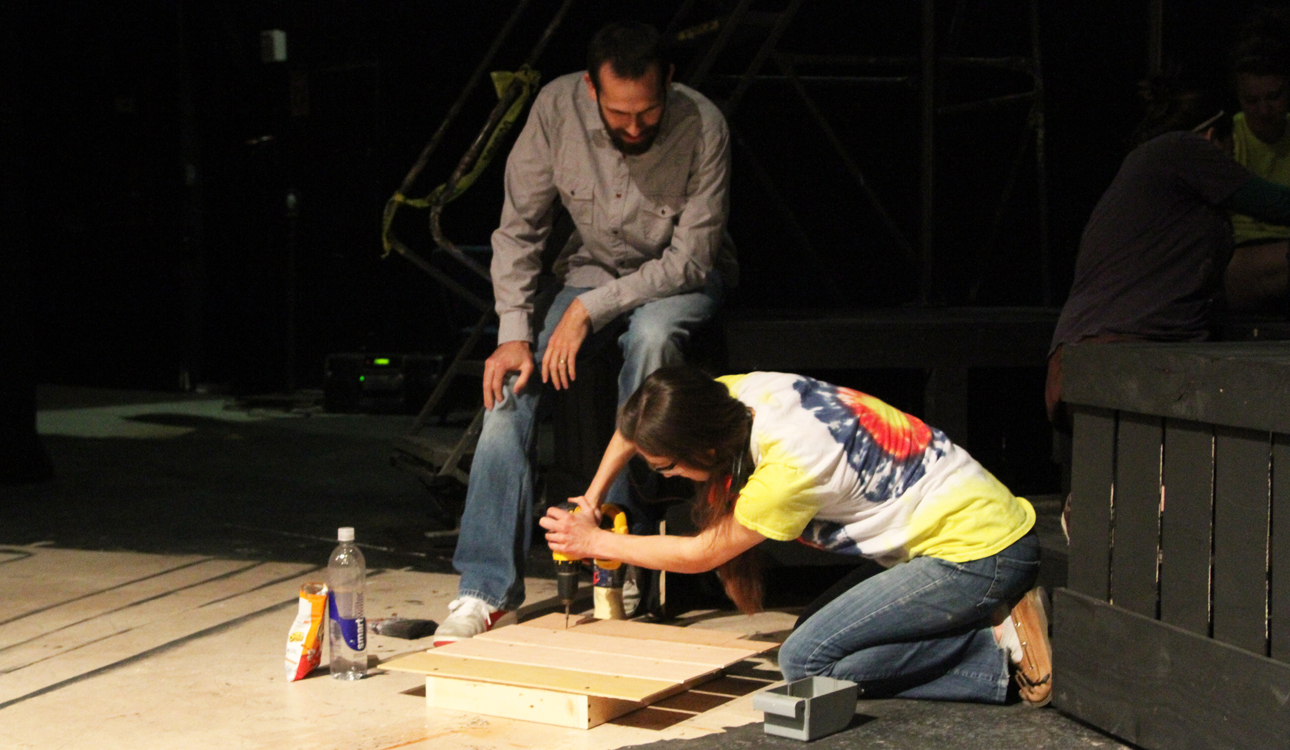
Matthew McCarroll | Lariat Photographer
By Robyn Sanders
Reporter
The Baylor theater department has begun rehearsing for the spring production of “Dr. Jekyll and Mr. Hyde.” Master’s candidate Josiah Wallace, who is directing the production, gave the Lariat some insight into what the prospective audience can expect about this theatrical interpretation of Robert Louis Stevenson’s novel.
Question: What is different about this play than the novel?
Wallace: A variety of things. One of the things that’s great about doing a play that’s an adaptation of a piece of literature is that everyone knows something, right? Everyone has some kind of preconception about the story and what it’s about.
The playwright for this, Jeffrey Hatcher, acknowledges that expectation, but in a very postmodern way. [He] basically takes that adaptation and exceeds your expectation or changes the possibilities of what you think the story could mean or be about. And not being specific, either, in saying, ‘It’s about this,’ but kind of opening up the story to possible meanings, as opposed to [just]one.
We often think about Jekyll and Hyde in terms of good and evil, and that’s not what Stevenson wrote. Stevenson wrote a tale about a person who was normal and a person who was evil. Not a person who was good and evil.
Question: What about the character of Jekyll/Hyde is appealing to you?
Wallace: It’s obviously appealing to most people. I think the attraction probably stems from the knowledge that all of us do the thing we don’t want to do, right? I mean, in that way, it’s biblical. It’s talking in terms of sin, which is often associated with [Hyde], and grappling with it, and that’s what’s going on with Jekyll.
In the original story, even, he is trying to rid himself of sin, or his sinful desires, and that is why Hyde is created. The thought process behind the creation of him is, ‘If I can isolate this being, maybe I can not be it. If I can isolate this being, I can not be who he is.’ And it doesn’t work out that way at all. But in terms of our fascination with it, I think it stems very much from this idea of us all recognizing that we want to do the things we think we should not, or that are morally problematic.
Question: What will the audience enjoy about this interpretation of the story?
Wallace: Hopefully, they will enjoy how the story is told and enjoy recognizing they don’t know the story. We want to take what people think they know and exceed it in ways they didn’t expect.
Otherwise we’d just end up with a lot of caricatured, evil laughter and silliness. And the other end of that, in terms of take away, is people grappling with their complicity in evil.
Question: What are some interesting qualities of this play that the audience might not expect?
Wallace: There are eight actors in the show, but there’s about 24 different roles that they play. A couple of them just play one role each, and the other six actors basically play the rest of the characters. So that transformation often occurs onstage. You’ll get to see them change from one character to another.
The other thing about this play is that there’s 29 scenes that take place in 16 different locations, basically. So, again, there’s no realistic set. We don’t have a realistic backdrop for each one of these locations.
Jekyll and Hyde aren’t played by one actor, they’re played by different actors.
And not only that, Hyde is not played by one actor, but it’s played by the rest of the actors. So through the course of the play, almost everyone . . . will embody Hyde at some time in the play, sometimes at the same time in the play.
Question: What aspects are you most looking forward to in directing and putting together this production?
Wallace: Well, we’ve already had two weeks of rehearsal, and it’s been good. Because of the crazy amount of scene changes, we came up with a way to indicate those transitions and those locales through a couple of scenic units that move, so most of our rehearsals of late have been a process of where do you move the units, how much do they move, who moves them and then how are they interacted with. So that’s been a really good part of the process.
I think I will certainly be glad when that’s over and it’s all integrated into everyone’s knowledge of how to tell the story, and then, you know, my favorite part is when it really starts to come together.
Please send comments to lariat@baylor.edu.






